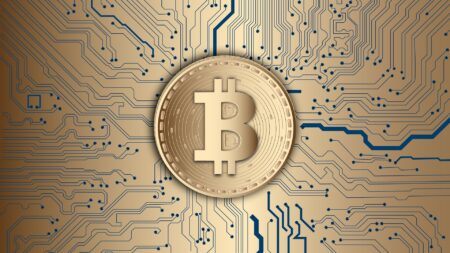On Wednesday (January 16th), Blockchain startup Blockstream announced that the “Blockstream Satellite API” service it introduced last month has gone live in beta (test) mode.
On 17 December 2017, Blockstream said that “Phase 2 coverage of the Blockstream Satellite network” had gone live; even more interestingly, for the purpose of this article, was that it also unveiled the Blockstream Satellite API, “a groundbreaking new broadcast service” that “empowers users to access the Blockstream Satellite network to broadcast data to the whole world” and pay with bitcoin (BTC) via the Lightning Network. Using the Satellite API, users would be able to “broadcast unencrypted data to everyone with a satellite receiver or target specific users by using encryption.”
Chris Cook, the Head of the Blockstream Satellite project, said at the time:
“While satellite communications are traditionally cost-prohibitive, Blockstream Satellite will finally allow developers to adopt satellite communications in their applications. The new API will make it possible to send ‘Hello World’ to the world, but we think developers will come up with something a little more adventurous than that. Natural disaster notifications, secure personal messaging, and sending bitcoin market data to remote locations are just some of the exciting examples of the power of this service.”
And a short time ago (around 19:10 UTC on January 16th, Blockstream announced the launch of the Blockstream Satellite API Beta via the following tweet:
We're excited to announce the launch of the #SatelliteAPI Beta! Pay via testnet #LightningNetwork to globally broadcast data for exciting new use cases! Mainnet support coming soon. Get started building ⚡️+🛰️-powered apps today! https://t.co/xs1T1z3VEH pic.twitter.com/ZpoEbGyDQo
— Blockstream (@Blockstream) January 16, 2019
According to Blockstream’s blog post, this service offers “anyone the chance to broadcast data” via Blockstream’s satellite network, with the fees to be paid via the Lightning Network testnet, i.e. “free broadcasts” for now; after the test period is over, the Blockstream Satellite API “will switch to mainnet to become one of the world’s first bitcoin-powered satellite services!” The swithc to the mainnet is expected to take place in late January.
This API gives developers an easy way to “submit messages for broadcast”. This could be used, for example, for “broadcasting secure messaging, alternative blockchains, or a global podcast.”
As for non-developers, there will be “an easy-to-use portal to submit simple messages via the Blockstream website” (which will also allow bitcoin payments via the Lightning Network). This portal allows users to upload a file (10KB maxium file size during the beta phase) that they would like to transmit via the Blockstream Satellite network.
Finally, Blockstream points out that due to its recent Phase 2 expansion, “messages can be received by the vast majority of the world’s population,” and the only things needed to receive these broadcasts are “a satellite dish (a TV satellite dish will suffice), a few low-cost components, and a computer.” Broadcasts can be received by anyone who is located anywhere “with a line of sight to one of our four geosynchronous satellites, completely free of charge.”
For now, Broadcast Satellite API is “broadcast-only.” Here is the fee structure:
“The fee to send data is variable and broadcasts are prioritised by the amount paid per byte sent. In times of heavy traffic, this creates a fee market, similar to how transactions compete for inclusion in Bitcoin blocks. The maximum message size is limited to ensure that a message can be transmitted within ten seconds if it is submitted with the highest current bid per byte.”
One more thing worth mentioning is that developers are “expected to handle their own encryption, fragmentation, and reassembly of large messages, according to each application’s needs.”
Today’s announcement came during a Reddit AMA session with Dr. Adam Back, the CEO of Blockstream. Here is what he said about the possibility of the Blockstream Satellite network (which was launched in August 2017 and “broadcasts the Bitcoin blockchain around the world 24/7 for free”) one day becoming two-way:
“The receive only Bitcoin transaction and block data stream is free to receive and broadcast nearly globally with the recent launch of Asia Pacific satellite coverage. The idea of providing global bi-directional satellite Bitcoin payments is attractive and part of why we started on this project in 2016, with initial launch in Aug 2017. We are proceeding in stages as we build more infrastructure and technology.
In terms of payment we expect to use incremental per transaction or message fees to sustain and grow these kind of use cases, as with the API announced today. It is free using testnet coins for a short time while in testing.
The cost per message or transaction is often reasonable because while it costs a lot relative to average salary in some emerging markets, to have an internet connection fast enough to maintain a fullnode, the cost per transaction to send or receive a transaction becomes small because they are small typically 250bytes range, so that even at $10/MByte a single transaction could cost less than 1c.”
Featured Image Credit: Photo via Pexels.com









